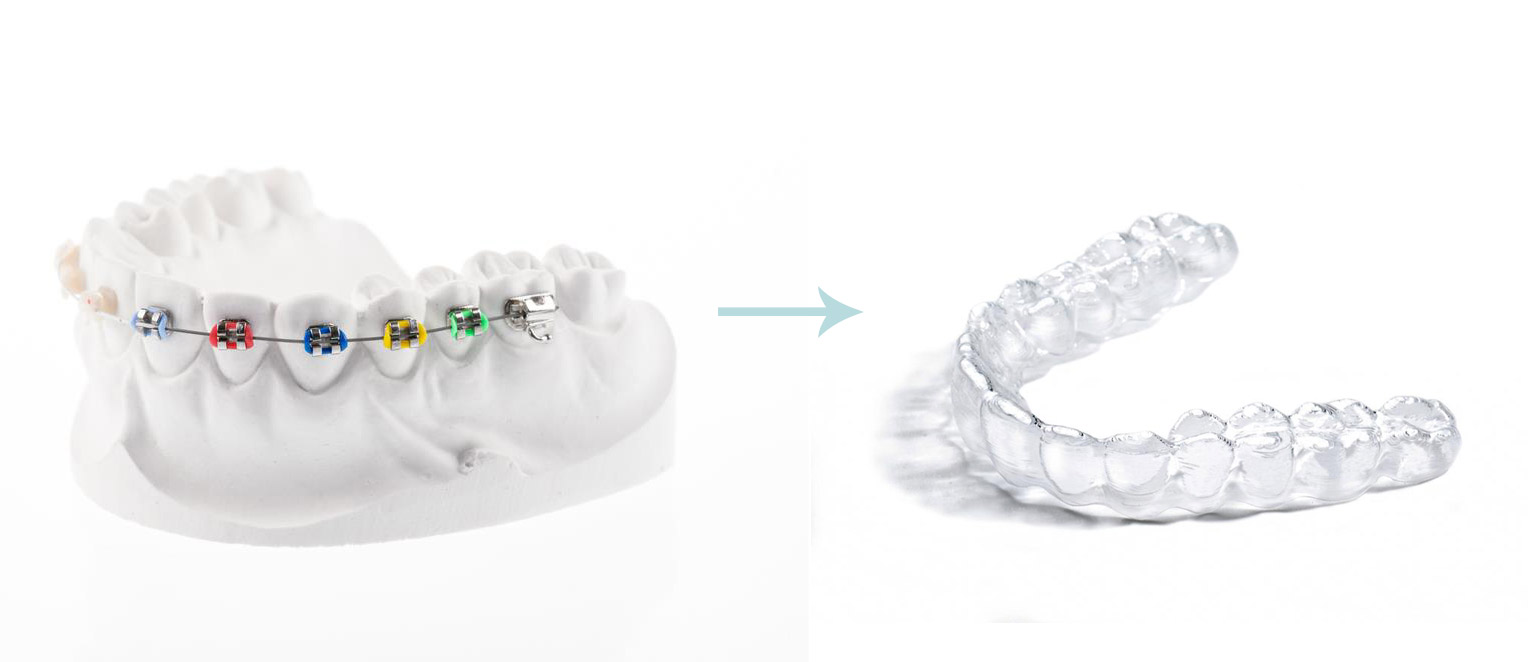When it comes to straightening your teeth, you have a few options to choose from. Two of the most popular are traditional braces and Invisalign. Both have their own unique set of benefits and drawbacks, so it’s important to understand the differences before making a decision.
Traditional braces, also known as metal braces, have been around for decades. They use metal brackets and wires to apply pressure to the teeth, gradually moving them into the correct position. Braces are highly effective at correcting all types of orthodontic issues, including overcrowding, overbite, underbite, and crossbite. They’re also suitable for both children and adults. However, traditional braces are not as aesthetic as Invisalign, and they can cause discomfort and make cleaning teeth more challenging.
On the other hand, Invisalign is a newer type of orthodontic treatment that uses clear plastic aligners to straighten the teeth. The aligners are custom-made to fit your teeth and are virtually invisible when worn. Invisalign is a great option for people who want to straighten their teeth without the visibility of traditional braces. Invisalign aligners are removable, which makes cleaning teeth and eating much more comfortable. But, Invisalign may not be as effective at correcting certain types of orthodontic issues, such as severe overbite or underbite, and it’s not suitable for children.
Ultimately, the choice between braces and Invisalign will depend on your individual needs and preferences. Both options have their own set of pros and cons, and the best choice for you will depend on the severity of your orthodontic issues and your personal preferences. It’s always best to consult with an orthodontist to discuss which option is best for you.
In conclusion, both braces and Invisalign are great options for straightening your teeth, and each has its own unique set of benefits and drawbacks. It’s important to talk to an orthodontist to determine which treatment is best for you based on your individual needs and preferences.
Another important factor to consider when deciding between braces and Invisalign is the cost. Braces tend to be less expensive than Invisalign, although the cost can vary depending on the severity of your orthodontic issues and the length of your treatment. Invisalign can be more expensive than traditional braces, but it may be covered by some dental insurance plans. It’s important to check with your insurance provider to see if they cover Invisalign and to get a clear understanding of your out-of-pocket expenses.
Another thing to consider is the duration of the treatment. Traditional braces typically require a longer treatment time compared to Invisalign. The average treatment time for traditional braces is about 18-24 months, while the average treatment time for Invisalign is about 12-18 months. However, the duration of the treatment can vary depending on the complexity of your orthodontic issues.
It’s also worth mentioning that both traditional braces and Invisalign require regular check-ups with your orthodontist. This is to ensure that your treatment is progressing as planned and that any necessary adjustments are made. With traditional braces, you’ll need to visit your orthodontist about every 4-8 weeks, whereas with Invisalign, you’ll need to visit your orthodontist about every 6-8 weeks.
In summary, both braces and Invisalign are effective options for straightening your teeth, but they have their own unique set of benefits and drawbacks. The best option for you will depend on the severity of your orthodontic issues, your personal preferences, your budget and your lifestyle. It’s important to consult with an orthodontist to determine which treatment is best for you.
When customers are comparing braces vs Invisalign, they should consider a few key factors:
- Aesthetics: One of the biggest differences between braces and Invisalign is their appearance. Traditional braces are made of metal and are highly visible, while Invisalign aligners are made of clear plastic and are virtually invisible. Customers who are self-conscious about the appearance of their teeth may prefer the discretion of Invisalign.
- Comfort: Braces can be uncomfortable, especially during the initial adjustment period. They can also cause sore spots on the inside of the cheeks and lips. Invisalign aligners are made of smooth plastic and are less likely to cause discomfort. They are also removable, which makes eating and cleaning teeth much more comfortable.
- Treatment time: Braces typically require a longer treatment time compared to Invisalign. The average treatment time for traditional braces is about 18-24 months, while the average treatment time for Invisalign is about 12-18 months. However, the duration of the treatment can vary depending on the complexity of your orthodontic issues.
- Cost: Braces tend to be less expensive than Invisalign, although the cost can vary depending on the severity of your orthodontic issues and the length of your treatment. Invisalign can be more expensive than traditional braces, but it may be covered by some dental insurance plans.
- Effectiveness: Both braces and Invisalign are effective at straightening teeth, but they may be more effective at treating certain orthodontic issues. Invisalign may not be as effective at treating severe overbite or underbite, while traditional braces can be more effective at correcting these issues.
- Maintenance: Both traditional braces and Invisalign require regular check-ups with your orthodontist. With traditional braces, you’ll need to visit your orthodontist about every 4-8 weeks, whereas with Invisalign, you’ll need to visit your orthodontist about every 6-8 weeks.
Ultimately, the choice between braces and Invisalign will depend on the customer’s individual needs and preferences. It’s important for customers to consult with an orthodontist to determine which treatment is best for them based on the severity of their orthodontic issues, their personal preferences, their budget and their lifestyle.




